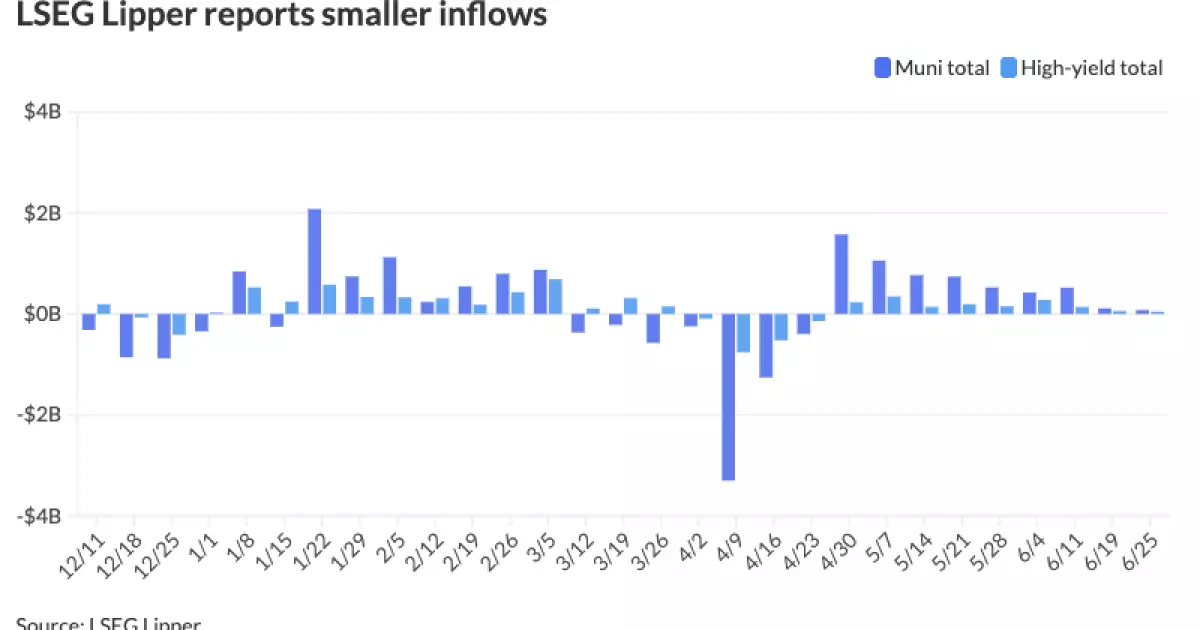The landscape of municipal bonds has become increasingly complex, especially amid the whirlwind of economic conditions and the political environment in America. With yields fluctuating, investors find themselves in a precarious position, caught between the historical charm of munis and the harsh realities of fiscal policy. The facts suggest that while there are glimmers of stable performance, the municipal bond market is riddled with inefficiencies and challenges that cannot be ignored.
The State of Munis: Mixed Signals
As we delve into the current state of the municipal bond market, the prevailing sentiment is one of caution. Recent data indicated that the municipal-to-Treasury yield ratios have surged but still hover near historical averages—indicating that while municipal bonds may seem appealing in isolation, their relative performance has generally lagged behind U.S. Treasuries. The two-year municipal-to-UST ratio at 70% feels reassuring until you realize that, for the year-to-date, munis are trailing Treasuries significantly. This suggests a broader issue at play—investors must ask themselves why they should engage with this asset class when its safety net seems threadbare.
Volatility: A Double-Edged Sword
The underlying volatility impacting municipal bonds raises concerns that extend well beyond mere market fluctuations. On one hand, some analysts like JB Golden have pointed out that there could be a resurgence in municipal performance; on the other hand, the specter of political maneuvers looms large. Political uncertainty gives rise to unpredictable issuance patterns, creating a landscape that is both unstable and uninviting. The suggestion that “broad interest rate volatility” significantly affects performance indicates that the municipal market is deeply intertwined with broader economic currents—an association that could result in turbulent waters ahead.
Political Pressures and Supply Dynamics
The influence of political decisions has never been more pronounced in the domain of municipal bonds. With federal support for state and local governments already on a downward trend, municipalities are compelled to either restrain their spending or issue new debts at unprecedented rates. The uptick in issuance by 16% so far this year serves as a stark reminder of the need for municipalities to sustain operational funding amidst dwindling federal allocations. This influx of supply presents a perilous scenario—especially when investors speculate whether the market can absorb such levels without diluting the value of existing bonds.
The Role of Fiscal Policy in Muni Affordability
While one could argue that high issuance levels may reflect healthier municipal needs, the competing realities of fiscal policy undermine this narrative. Investors have to discern whether newly issued bonds genuinely represent an investment in community service or merely a temporary salve for deeper fiscal wounds. The notion that municipalities are “hurtling” toward the heaviest reinvestment period is somewhat alarming; it implies a gamble that does not necessarily translate into sustainable growth or stability.
Valuations: A False Sense of Security
Consulting analysts like Golden leads to mixed conclusions, notably that current valuations may appear historically attractive, but superficial metrics often mask deeper issues. The alignment of valuations and demand may create a mirage of market strength, while beneath the surface, foundations continue to erode. Investors need to remain vigilant against the siren call of “tailwind narratives” that often gloss over fundamental weaknesses. A transient “headwind to tailwind” shift could easily revert as political climates shift or economic conditions sour.
The Investor’s Dilemma
As we survey the municipal bond market’s landscape, it becomes increasingly apparent that investors must navigate carefully. The infusion of $76.9 million into municipal bond mutual funds shortly before the end of June reveals a tentative optimism among some market participants, but this sentiment can change on a dime. Real gains are at stake, but chasing after fleeting trends in the face of volatile supply and demand dynamics might be a precarious game. The rise and fall of inflows, juxtaposed with the realities of an unstable political environment, suggest that potential gains should be approached with both enthusiasm and caution—because, in this market, risks often lurk where least expected.
A Call to Action: Rethinking Strategies
As complacency threatens to cloud judgment, a reevaluation of investment strategies is crucial. Moving forward, the question for discerning investors becomes clear: in a market fraught with uncertainties, how can one develop a strategy that not only seeks gains but also mitigates risk? The challenge is not merely about capitalizing on interest rates but also understanding the interplay of fiscal policy, political realities, and market sentiment. In this high-stakes environment, knowledge, adaptability, and prudence will determine who comes out on top—or who gets left behind.

